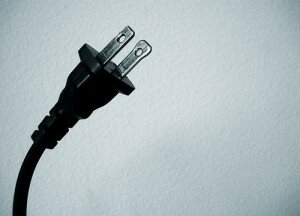[Ed. note: This article is part of our weekly series of church activities, called Cultivating Community, published on Thursdays.]
Applying good principles of creation stewardship to the operation and care of your church’s buildings and grounds not only helps your congregation obediently adhere to God’s call to “tend and keep” the creation (Genesis 2:15), but studies show that making these changes can help a congregation save up to 30% on energy costs. Such savings free up church resources to be used for other aspects of ministry. These savings are especially critical to churches struggling to faithfully serve their communities in this economic climate.
Start implementing these energy- and cost-saving measures by doing a church energy audit. Most local utility providers will evaluate your facilities to determine ways they could be made more energy efficient, and you can check with them to arrange one of these audits, but you can also start the process on your own. The following church energy audit suggestions are so simple and straightforward that your church’s youth group can perform them. Give the youth group a day to explore your facilities for increased efficiency opportunities, and then let them get started making some of the easiest changes that will contribute to your congregation’s care of creation.
Audit
Review your church’s utility bills for the last year and determine in which areas your congregation would most benefit from greater efficiency. Take a tour through your church’s buildings and grounds and look for the following:
- Lights using incandescent bulbs
- Lights that are often kept unnecessarily illuminated
- Leaky faucets in bathrooms and kitchens
- A water heater that is un-insulated or set to above 120 degrees
- Cracks in the weather-stripping or caulk around doors and windows; gaps along doors, windows, and electrical outlets where outside air is entering the building. Air leaks that can’t be felt with the hand can often be discovered by holding a candle up to the area and looking for the candle’s flame to flicker.
- Outside doors that are often left open unnecessarily
- The orientation of windows and opportunities to utilize natural light
- The kind of thermostats the facilities rely on, and the temperature to which they are set
- Electrical equipment (computers, printers, copiers, lamps, TVs, DVRs, etc.) that remains plugged in and/or on all the time
- Energy Star-approved appliances such as refrigerators, TVs, computers, dishwashers, boilers, furnaces, water heaters, and light fixtures
Fix it
Spend some time making immediate changes as appropriate, or crafting a plan for regularly and incrementally reducing your
facilities’ energy use:
- Replace incandescent light bulbs with compact fluorescent lamps. CFLs cost about 75% less than incandescent light bulbs to operate, and they last up to ten times longer.
- Turn off or make a plan to turn off lights that are not in use. Install switch plate occupancy sensors where appropriate, to avoid using lights in spaces that aren’t always occupied.
- Fix leaky faucets immediately. Consider installing water-saving devices in faucets and toilets.
- Install an insulation blanket on water heaters seven years of age or older, and insulate the first three feet of the heated water “out” pipe on both old and new units. Set water heaters to between 110-120 degrees. There is no need to heat water beyond this temperature (although you should check with local codes), and reducing the set temperature saves energy.
- Replace cracked weather-stripping along doors, and caulk or re-caulk around windows if it appears that outside air is seeping in through gaps. Purchase and install foam insulation for outlets, and place plastic plugs in unused sockets, for both safety and energy efficiency.
- Ensure that exterior doors are always closed when not in use. After people have stopped coming and going through the doors around service times, make sure the doors are firmly closed. Make this simple, but effective, step part of your regular energy efficiency plan and alert congregants to it.
- Utilize natural light and heat, reducing electric lighting and heating or cooling accordingly. In summer, cover windows from the heat of the sun to avoid turning the air conditioning too high. In winter, let the sun provide heat and light through these windows, but cover them when the sun isn’t shining through them in order to save on heating costs.
- Purchase programmable thermostats, which are very reasonably priced, and program them according to the needs of the church spaces over the course of the week. Turning the heat no higher than 68 degrees, and air conditioning no lower than 80 degrees will dramatically cut your heating and cooling bills. Use fans, rather than central air conditioning, as much as possible. Air circulation ultimately has a more cooling effect than artificially cooling still air.
- Unplug appliances that don’t need to be in use at all times. To make this easier, place a number of appliances in the same area on a powerstrip, and turn this off when those appliances aren’t in use. Make sure that anything with a “ready” light (computers, printers, TVs, coffeemakers, etc.) is turned completely OFF when not in use. Screen savers on computers save nothing. Turning computers completely off creates a great reduction in energy use.
- Installing Energy Star-approved appliances and equipment will reduce your energy costs. This rating approves machines that utilize as little energy as possible to accomplish their tasks. When older equipment requires replacement, install new equipment with Energy Star specifications.
These are the preliminary, simple tasks that will foster a drop your utility bills and your church’s negative impact on God’s creation. If you want to dig deeper into more dramatic steps your congregation can take in the area of facilities stewardship, read next week’s article “Transformation: Overhauling Church Facilities for Energy Efficiency.”
Related Posts at Flourish
Eight Starter Ideas for Churches That Care About Creation
Flourish Magazine Toolshed: Batten Down the Hatches
Further Reading
Energy Star’s energy use guide for congregations


[...] let’s just say that, according to last week’s article on doing energy audits at church, you congregation has caulked every window, replaced every incandescent light bulb with a compact [...]